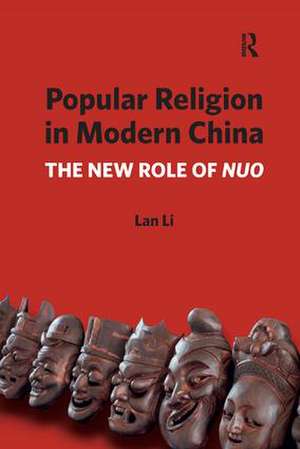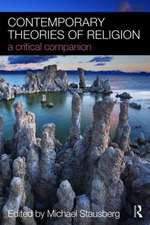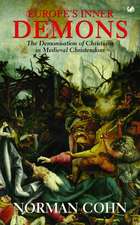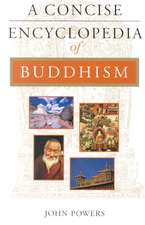Popular Religion in Modern China: The New Role of Nuo
Autor Lan Lien Limba Engleză Paperback – 31 mar 2017
| Toate formatele și edițiile | Preț | Express |
|---|---|---|
| Paperback (1) | 389.38 lei 6-8 săpt. | |
| Taylor & Francis – 31 mar 2017 | 389.38 lei 6-8 săpt. | |
| Hardback (1) | 1008.97 lei 6-8 săpt. | |
| Taylor & Francis – 28 ian 2015 | 1008.97 lei 6-8 săpt. |
Preț: 389.38 lei
Nou
Puncte Express: 584
Preț estimativ în valută:
74.51€ • 77.95$ • 61.89£
74.51€ • 77.95$ • 61.89£
Carte tipărită la comandă
Livrare economică 03-17 aprilie
Preluare comenzi: 021 569.72.76
Specificații
ISBN-13: 9781138053236
ISBN-10: 1138053236
Pagini: 308
Dimensiuni: 156 x 234 mm
Greutate: 0.45 kg
Ediția:1
Editura: Taylor & Francis
Colecția Routledge
Locul publicării:Oxford, United Kingdom
ISBN-10: 1138053236
Pagini: 308
Dimensiuni: 156 x 234 mm
Greutate: 0.45 kg
Ediția:1
Editura: Taylor & Francis
Colecția Routledge
Locul publicării:Oxford, United Kingdom
Notă biografică
Lan Li received her PhD in Social Anthropology from Queen's University Belfast, UK in 1998 and the research was funded by the university and the Royal Anthropological Institute of Great Britain and Ireland. Her doctoral thesis, entitled 'Nuo: Shamanism among the Tujia of Southwest China' studied the rise of popular religions in contemporary China and its changing role in the process of profound social transformation in post-Mao era. The thesis was later published in book form in Chinese. Her most recent publication in this area is the article entitled 'The Changing Role of the Popular Religion of Nuo in Modern Chinese Politics' which was published by Modern Asian Studies in 2010. Dr Li is a member of the British Association for Chinese Studies and the Association for Chinese Studies in Ireland. She is currently a member of staff at the Irish Institute for Chinese Studies at University College Dublin.
Recenzii
’This book is a rich ethnographic account of Nuo religious culture among the Tujia ethnic minority living in contemporary Guizhou, China. Nuo culture combines exorcism, divination, religious drama using face masks, and ancestor and deity worship. Although found at the margins of Han Chinese society today, Nuo traces back to the power centers of ancient China, at the courts of the theocratic state during the Zhou Dynasty. The Confucianization of the imperial state led to the decline of Nuo culture, but it was preserved by ethnic minorities who adapted it down to modern times. Besides the excellent ethnography, the book displays three other admirable strengths: the longue durée historical perspective; the account of changes in modern Chinese state attitudes towards religion and Nuo culture; and the discussion of the political and commercial uses and deployments of Nuo by local communities, and the local and central governments.’ Mayfair Yang, University of California, USA
Cuprins
1: Problem and Method; 2: Shenxi and Tujia Society; 3: Tujia Cosmology; 4: Nuo; 5: Nuo as a Cultural Marker of the Tujia; 6: Nuo and State Ideology; 7: Nuo, Intangible Cultural Heritage and the Commercialisation of Culture; 8: Conclusion
Descriere
This book examines the role popular religion has played in modern Chinese politics. The popular religion of Nuo will be used as an example of how the new role has enabled the religion to be directly incorporated into the Chinese Community Party's policies, to be viewed as supporting the legitimacy of the regime, and to function as a tool to enhance national cohesion and safeguard national unification. This volume provides new material on the interplay between contemporary Chinese politics, popular religion and economic development in a rapidly changing society of Mainland China.

















